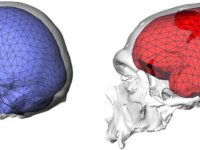With recent quarantining and social distancing measures, many people have sought out companionship in an unexpected way: buying more plants. For those of us who have experienced the successes and losses of caring for houseplants, it is quite evident that these organisms are highly responsive to their environment — whether that be light, soil pH, or humidity. Based on recently published studies of plant awareness and consciousness though, it is becoming clear that we have overlooked just how perceptive these companions are.
Originally proposed by Charles Darwin, the idea that plants possess their own neurobiology distinct from animals’ is now a common belief among botanists and biologists alike. In recent history, biologists have discovered many phenomena that support this theory including action potentials, or cell communication via bioelectricity, in Venus traps and underground communication occurring between plants via electrochemical signaling. Scientists even discovered that plants are capable of memory and can be trained to stop responding to particular stimuli, such as touch, from their environment.
Plants may have a signal propagation network within them that functions similarly to our own mammalian nervous system.
In 2018, Dr. Masatsugu Toyota and his team at Saitama University in Japan, discovered that plants release a nervous-system-like signal in response to “painful” stimuli. The group reported that the plant Arabidopsis thaliana, a small flowering plant native to Eurasia, uses a rapid and long-distance signaling pathway to communicate to the rest of the plant when one section of the plant is wounded. This long-distance signaling takes only seconds to minutes to reach distant leaves. The team proposes that the signaling mechanism involves calcium ions released at the site of the wound and are then received and propagated via receptors throughout the rest of the plant. Unexpectedly, the receptors used for signal propagation in the plant are very similar to glutamate receptors in mammals, which serve an identical function in mammalian long-distance signaling pathways. The concept that a plant is capable of communicating wounds or pain to the rest of its body suggests that plants may have a signal propagation network within them that functions similarly to our own mammalian nervous system. Nevertheless, does the fact that plants possess a nervous-system-like network mean that plants must have some capacity for consciousness? It’s unclear.
Throughout the course of human history, consciousness has been attributed not only to humans but to an ever-expanding subset of animals.
In an attempt to study this question, Dr. Ken Yokawa from the University of Bonn in Germany and a team of international collaborators studied the effect of anesthesia on plants. In humans, anesthesia is used to disrupt electrical signals that lead to movement; this team of researchers found that anesthesia had the same effect on plants. The study showed that, just like in humans, appropriate doses of anesthesia immobilized plant organs by blocking action potentials and disrupting normal intra- and intercellular processes. Action potentials are a fundamental part of animation in humans, animals, and plants alike, which is why anesthesia, disrupting these bioelectrical circuits, works on all three. The Venus flytrap, where action potentials allow the plant to “attack” prey by closing the trap and initiating the digestive processes, was completely unresponsive to prey-like stimuli when anesthetized. In humans, consciousness is generally attributed to action potentials and electrical signaling within the brain, and it is well known that most of this electrical activity ceases during anesthetization leading to an unconscious state. This study shows that anesthesia affects plants similarly to how it affects humans; electrical signaling is disrupted and motion of the plant ceases after receiving a dose of anesthesia. And, similar to humans, the dose is capable of “wearing off” and the plants, in essence, “wake up” and return to normal movement and respond as they normally do to environmental stimuli. This inspires the interesting question of whether or not this means plants themselves are capable of consciousness.
Throughout the course of human history, consciousness has been attributed not only to humans but to an ever-expanding subset of animals. This recent research in plants indicates that perhaps the capacity for consciousness extends outside of the animal kingdom. It may be time to redefine what it means for an organism to truly be conscious of the world around them.
Science (2018). DOI: 10.1126/science.aat7744
Annals of Botany (2018). DOI: 10.1093/aob/mcx155
Science (2018). DOI: 10.1126/science.aau9813
Image source: Pixabay.





